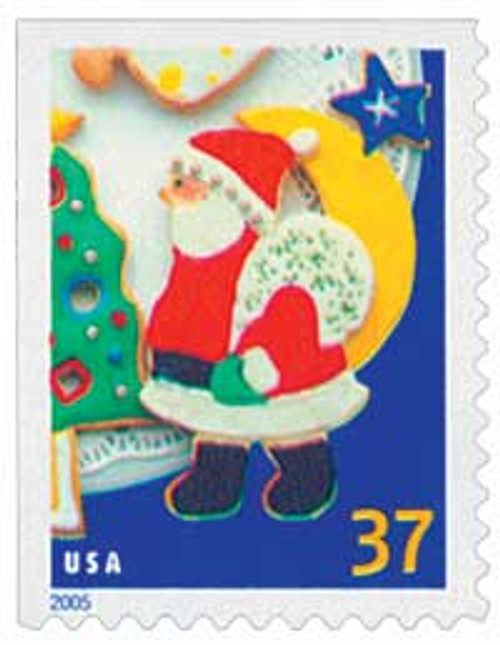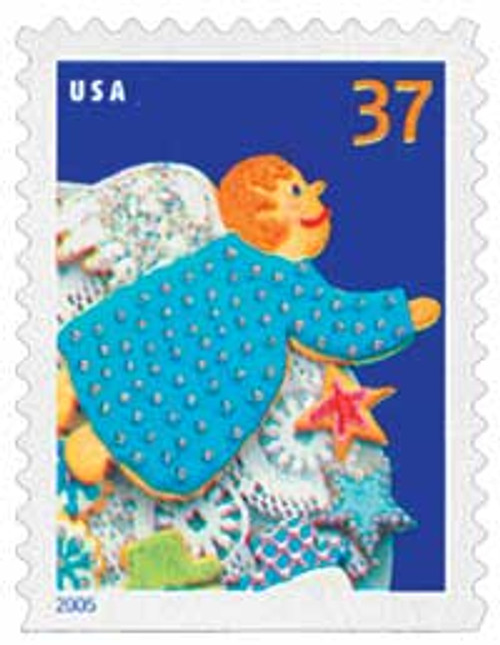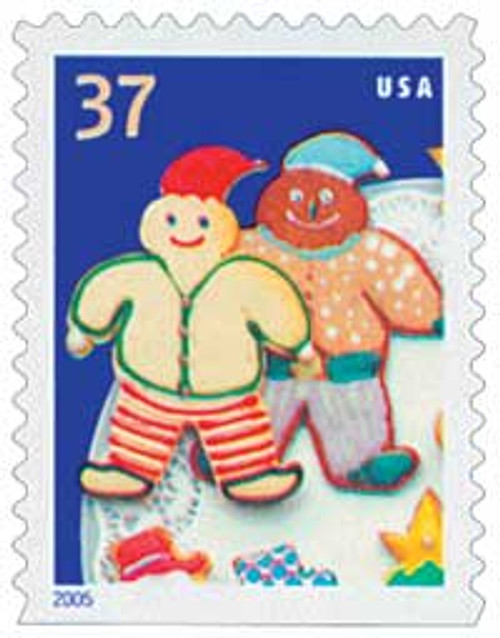
2005 37c Contemporary Christmas: Holiday Cookies, booklet stamps
# 3953-56 FDC - 2005 37c Contemporary Christmas: Holiday Cookies, booklet stamps
$3.50 - $8.95
U.S. #3953-56
37¢ Holiday Cookies
Contemporary Christmas Booklet Stamps
37¢ Holiday Cookies
Contemporary Christmas Booklet Stamps
Issue Date: October 20, 2005
City: New York, NY
Quantity: 800,000,000
Printing Method: Photogravure
Color: Multicolored
City: New York, NY
Quantity: 800,000,000
Printing Method: Photogravure
Color: Multicolored
The earliest cookies may date back to 7th-century Persia, one of the first countries to grow sugar cane. Early cooks prepared sweet, baked goods for important occasions. A cookie-sized amount of cake batter would be baked to test oven temperatures.
Many Asian recipes and ingredients (nuts, spices, and dried fruits) were introduced to Europe in the Middle Ages by returning crusaders. Gingerbread was first baked in Europe at the end of the 11th century.
Queen Elizabeth I gave important visitors gingerbread likenesses of themselves – the first gingerbread men. Later, the story of Hansel and Gretel inspired German bakers to produce elaborate gingerbread houses.
By the 1500s, Christmas cookies were made all over Europe. Lebkuchen, a German honey cookie, was the first traditional Christmas cookie, and anise-flavored Springerle have been a Christmas tradition in Germany and Austria for centuries. The Norwegians made thin lemon-and-cardamom Krumkake, and the ginger-and-black-pepper Pappakakor were favorites in Sweden.
Fortunately, early settlers brought their cookie recipes with them to the U.S. The holiday cookie tradition lives on in American families and on the “Holiday Cookies” postage stamps.
U.S. #3953-56
37¢ Holiday Cookies
Contemporary Christmas Booklet Stamps
37¢ Holiday Cookies
Contemporary Christmas Booklet Stamps
Issue Date: October 20, 2005
City: New York, NY
Quantity: 800,000,000
Printing Method: Photogravure
Color: Multicolored
City: New York, NY
Quantity: 800,000,000
Printing Method: Photogravure
Color: Multicolored
The earliest cookies may date back to 7th-century Persia, one of the first countries to grow sugar cane. Early cooks prepared sweet, baked goods for important occasions. A cookie-sized amount of cake batter would be baked to test oven temperatures.
Many Asian recipes and ingredients (nuts, spices, and dried fruits) were introduced to Europe in the Middle Ages by returning crusaders. Gingerbread was first baked in Europe at the end of the 11th century.
Queen Elizabeth I gave important visitors gingerbread likenesses of themselves – the first gingerbread men. Later, the story of Hansel and Gretel inspired German bakers to produce elaborate gingerbread houses.
By the 1500s, Christmas cookies were made all over Europe. Lebkuchen, a German honey cookie, was the first traditional Christmas cookie, and anise-flavored Springerle have been a Christmas tradition in Germany and Austria for centuries. The Norwegians made thin lemon-and-cardamom Krumkake, and the ginger-and-black-pepper Pappakakor were favorites in Sweden.
Fortunately, early settlers brought their cookie recipes with them to the U.S. The holiday cookie tradition lives on in American families and on the “Holiday Cookies” postage stamps.








